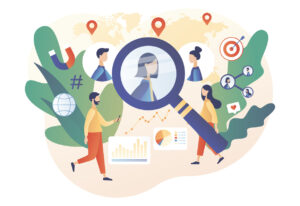4 ways to refresh your HR communications strategy
Communicating across business functions requires a sense of play and context around the history of the relationship.

At any given time the workplace includes four generations — kind of like the Thanksgiving table — which can challenge communications. While we each may have different opinions, we also have often common goals and common ground.
Tomas Mathews, chairman of the board at the Society of Human Resource Management (SHRM) Foundation , has lived through many a workplace revolution. As a one-time senior people-human resources officer for companies that range from entertainment to technology, Mathews was at the frontiers of an industry that invented many of the communications platforms utilized today. This exposed him to both the public and the workforce impact.
Mathews shared several tips for how leaders can rethink their HR communications strategy.
- Be creative and have fun to reach all employees
Mathews explained that the most successful workplaces have fun with communications strategy.
“There’s just different formats you’re going to have to use to reach different parts of the population,” he said. “And it’s an opportunity to be creative about how you reach those different populations.” This means using all platforms — from technology to well-crafted and thoughtful memos left on desks.
“The employee population doesn’t like the dull boring,” Mathews adds. “Make sure it fits your culture. And have a little fun with the communication. Figure out what’s right for your organization.
- Rethink what you consider “soft skills”
During Mathews’ time as a head of HR, human resources and corporate communications often worked together to best deliver information. However, this was often done in a cloaked, “backroom” manner because soft skills were not valued then as they are today — except by certain visionary leaders.
“Today I wouldn’t call them soft,” Mathews says. “I would just call them people skills —communication skills, interactive skills, engagement skills, cultural skills.” He added that encouraging these skills used to take much more organizational finesse.
“You wanted to have great financial performance. We learned to talk about what we did in terms of the impact on the spreadsheet.”
Today, Mathews believes that work is more about people. “Talent has become more important than ever,” he said, ”even though many of us would say it was always critically important. But there’s much more of a realization. The structure and the acquiring and retention of the talent are tantamount to the business.”
- Always put mental health at the forefront
Many of today’s leaders have not been trained to manage the hybrid work environment or recognize the mental health challenges that their employees face.
“If employers aren’t paying attention to the mental health of their employees, they’re going to be behind the eight ball,” Mathews predicted. “There were a lot of employees who had mental health issues prior to the pandemic that worsened. Whether that was anxiety, depression, the list goes on.”
With a worker shortage, it’s incumbent upon organizations to be well-resourced to offer support and treatment to people who struggle. This far exceeds what was once called Employee Assistance Programs (EAP) and includes online platforms without the stigma attached to mental health challenges.
“We’re not going to make HR staff healthcare professionals, but we can make them much more savvy and sophisticated on how to deal with and spot mental health issues,” Mathews added.
- Help HR bring the “where to” and “how to” together
Across the past three decades, the role of human resources has become more powerful. While benefits, hiring, firing, learning, and compensation continue as stalwarts, HR leaders are now much more involved in strategy.
Mathews said that while remote work is the baseline, it’s incumbent on communicators to understand that there are many jobs that will never be remote. “It’s hard to beat doing in-store customer service from home,” he said, adding that there are many jobs requiring a physical presence while others still can be done in a hybrid arrangement. The environment to create the convergence of “where to” and “how to” work is the domain of the HR pro — with guidance, support, and leadership from the comms team.
Jennifer Mooney is an award-winning communications expert. Her senior management tenure includes the former Time Warner, ad agency communications teams, and consulting with diverse clients. She holds an undergraduate degree in Journalism (Albion College) and an MA in Industrial-Organizational Psychology (Union Institute). She is the co-author of Hope Interrupted; America Lost and Found in Letters—a book and podcast. (Orange Frazer Press- 2021)






